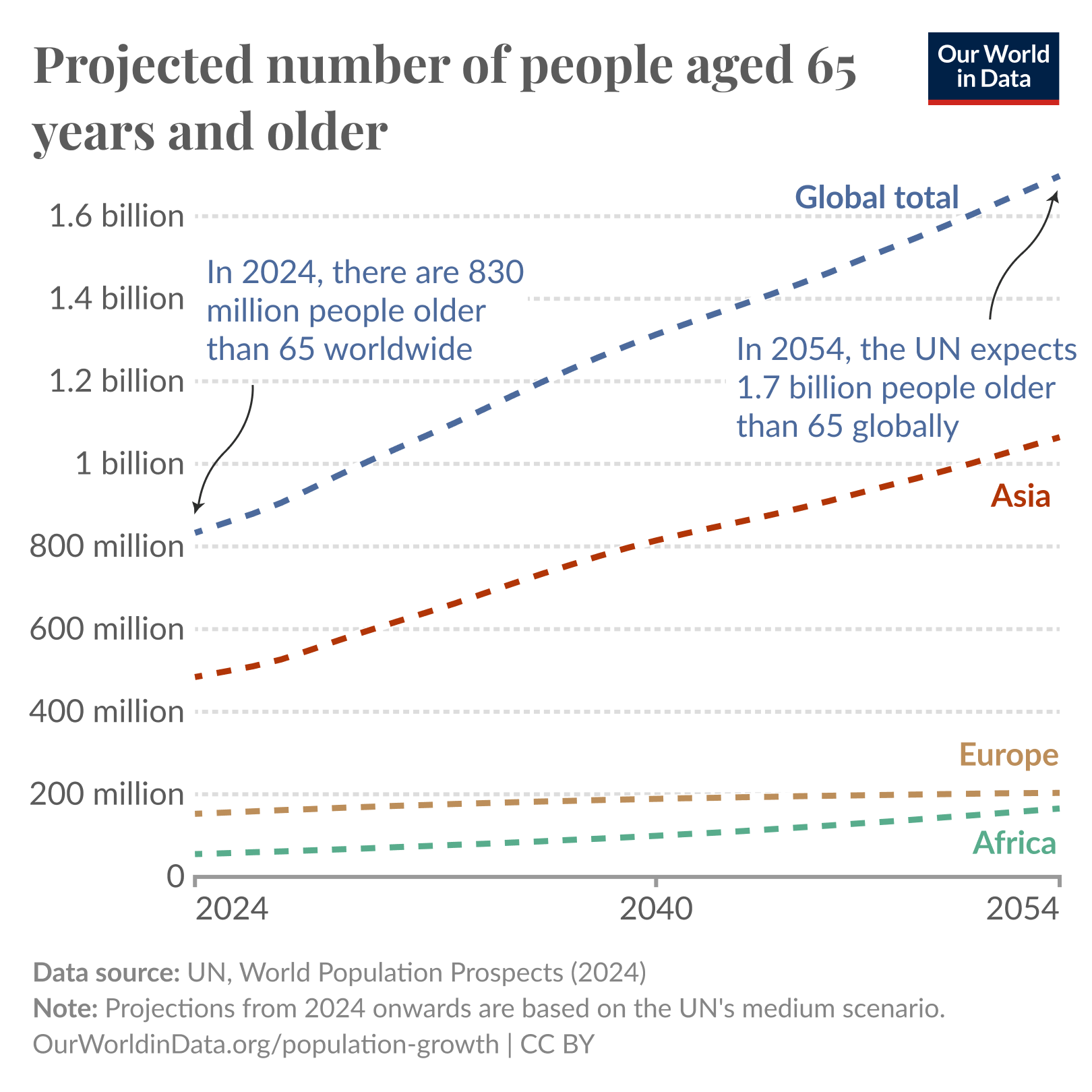the impact of population aging on healthcare

By 2030, one in six people worldwide will be over 60 years old, increasing from 1 billion in 2020 to 1.4 billion. By 2050, this number will double to 2.1 billion, including 426 million people aged 80 or older—three times the number in 2020 (WHO report) [1].
The world is aging at an unprecedented rate, placing immense pressure on healthcare systems. As life expectancy rises, so does the prevalence of chronic conditions such as cardiovascular disease, COPD, and cancer. While medical advancements allow for earlier detection and improved treatments, they also extend the need for long-term disease management and continuous care. This shift—from acute interventions to chronic care—demands a fundamental change in how healthcare is delivered.
However, the growing demand for healthcare services is outpacing available resources. Workforce shortages, rising costs, and an over-reliance on hospital-based care create an unsustainable burden on the system. Traditional models of periodic check-ups and reactive treatments are no longer sufficient. A shift toward preventive, continuous, and remote care solutions is essential.
technology as a catalyst for change
To meet these challenges, healthcare must evolve into a patient-centered, data-driven ecosystem. Investing in primary care, remote monitoring, and proactive disease management will not only reduce hospital admissions but also empower aging populations to live independently for longer.
At smartQare, we are enabling this transformation with continuous monitoring solutions that provide real-time insights into a patient’s condition—detecting changes before they become critical. Our technology facilitates timely interventions, reduces hospitalizations, and supports aging in place, allowing older adults to remain safely at home while alleviating pressure on healthcare providers.
The time to act is now. By embracing technology and rethinking care delivery, we can build a future where aging populations receive proactive, high-quality care—without overwhelming the system.
sources
[1] https://www.who.int/news-room/fact-sheets/detail/ageing-and-health
[2] https://www.ncoa.org/article/the-top-10-most-common-chronic-conditions-in-older-adults/
[3] Hofer, F., Schreyögg, J., & Stargardt, T. (2022). Effectiveness of a home telemonitoring program for patients with chronic obstructive pulmonary disease in Germany: Evidence from the first three years. Plos one, 17(5), e0267952.
Visual: The global number of people aged 65 years and older is set to double within the next thirty years - Our World in Data

